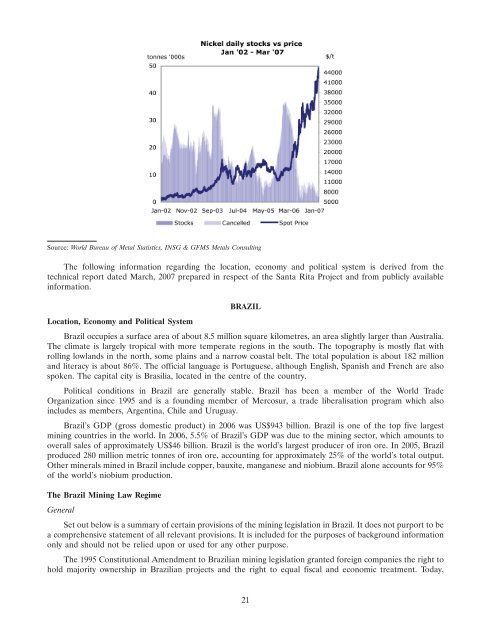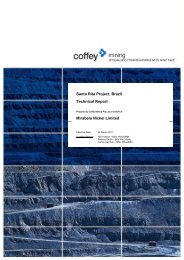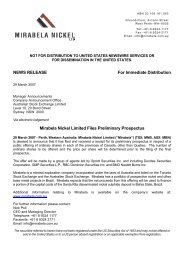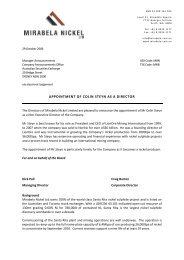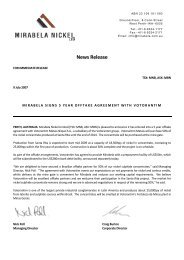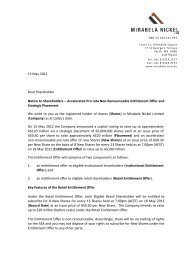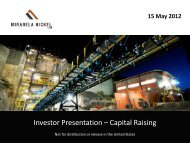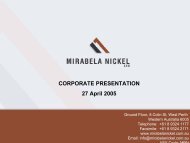COPY OF FINAL PROSPECTUS - Mirabela Nickel
COPY OF FINAL PROSPECTUS - Mirabela Nickel
COPY OF FINAL PROSPECTUS - Mirabela Nickel
You also want an ePaper? Increase the reach of your titles
YUMPU automatically turns print PDFs into web optimized ePapers that Google loves.
27MAR200712114903<br />
Source: World Bureau of Metal Statistics, INSG & GFMS Metals Consulting<br />
The following information regarding the location, economy and political system is derived from the<br />
technical report dated March, 2007 prepared in respect of the Santa Rita Project and from publicly available<br />
information.<br />
BRAZIL<br />
Location, Economy and Political System<br />
Brazil occupies a surface area of about 8.5 million square kilometres, an area slightly larger than Australia.<br />
The climate is largely tropical with more temperate regions in the south. The topography is mostly flat with<br />
rolling lowlands in the north, some plains and a narrow coastal belt. The total population is about 182 million<br />
and literacy is about 86%. The official language is Portuguese, although English, Spanish and French are also<br />
spoken. The capital city is Brasilia, located in the centre of the country.<br />
Political conditions in Brazil are generally stable. Brazil has been a member of the World Trade<br />
Organization since 1995 and is a founding member of Mercosur, a trade liberalisation program which also<br />
includes as members, Argentina, Chile and Uruguay.<br />
Brazil’s GDP (gross domestic product) in 2006 was US$943 billion. Brazil is one of the top five largest<br />
mining countries in the world. In 2006, 5.5% of Brazil’s GDP was due to the mining sector, which amounts to<br />
overall sales of approximately US$46 billion. Brazil is the world’s largest producer of iron ore. In 2005, Brazil<br />
produced 280 million metric tonnes of iron ore, accounting for approximately 25% of the world’s total output.<br />
Other minerals mined in Brazil include copper, bauxite, manganese and niobium. Brazil alone accounts for 95%<br />
of the world’s niobium production.<br />
The Brazil Mining Law Regime<br />
General<br />
Set out below is a summary of certain provisions of the mining legislation in Brazil. It does not purport to be<br />
a comprehensive statement of all relevant provisions. It is included for the purposes of background information<br />
only and should not be relied upon or used for any other purpose.<br />
The 1995 Constitutional Amendment to Brazilian mining legislation granted foreign companies the right to<br />
hold majority ownership in Brazilian projects and the right to equal fiscal and economic treatment. Today,<br />
21


